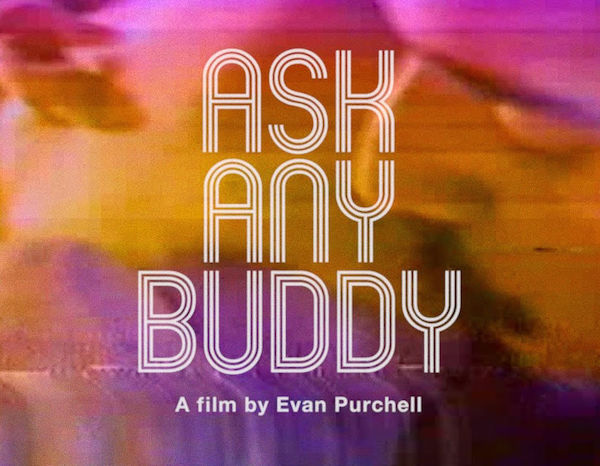If you weren’t around for the 1970s, it’s a hard era to explain. And thanks to AIDS, there are fewer people left alive to explain the queer experience of that decade. Happily, there are movies. The reason that these movies exist is almost accidental. Budding auteurs, inspired by 60’s underground cinema, started shooting gay porn films in real locations. In many cases, the establishing shots look like they were shot on the fly by a lone camera person. Back when people didn’t routinely carry video cameras in their phones, a camera could draw attention, and when it did, it was more likely to be met with enthusiasm than hostility, especially if the cameraman looked like the people that he was filming. It’s worth noting that at least one of these filmmakers (Fred Halsted) has a film in the permanent collection of MoMA.

Evan Purchell is an archivist/historian who specializes in the culture of this era. His Instagram account @askanybuddy features advertisements and stills from films of this era. Most of the ads look more like punk rock flyers than publicity for any sort of commercial cinema. His Twitter account @schlockvalue is fun too. He uses that to showcase recent acquisitions and to share some jaw-dropping bits of monolog, dialog and shots of lost locations. He is currently in the process of making his debut as a filmmaker. Using pieces of 126 of these films, he has created a collage film that might be the best existing snapshot of the queer 70’s experience. People looking for something to compare it to, often come up with Christian Marclay’s collage films.

Still from Ask Any Body, 2020.
Collage is one of those art forms to which many are called, but few are chosen. It is trickier than it looks to cause multiple power-laden images to interact in a way in which they become more than the sum of their parts. One of the wonderful things about the finished film is that Purchell employs his archivist sensibility to find subtle common motifs. Those three shots that you just saw of the same place might actually be from three different movies that were filmed in the same location. Many of these locations were either torn down, like the New York piers, or gentrified beyond recognition. Others such as clubs and bathhouses might have been closed. One of the things that makes this such compelling viewing is that many of these films were butchered for shorter running times, and to focus more on sex. By finding original prints, more of the lost history that was less titillating is available as documentary footage of the era (the earliest film dates from 1968, and the latest is from 1986). Although he doesn’t shy away from the X-rated scenes, it doesn’t feel like this film is about them: they feel like a natural part of the landscape that they inhabit.

Still from Ask Any Body, 2020.
The film opens with the warning: “For your enjoyment, do not try to understand this film, there is nothing to understand. It is only real people doing reel things and making them real together.” This is excellent advice. Fasten your seatbelts, and please keep your hands and arms inside the car at all times.


